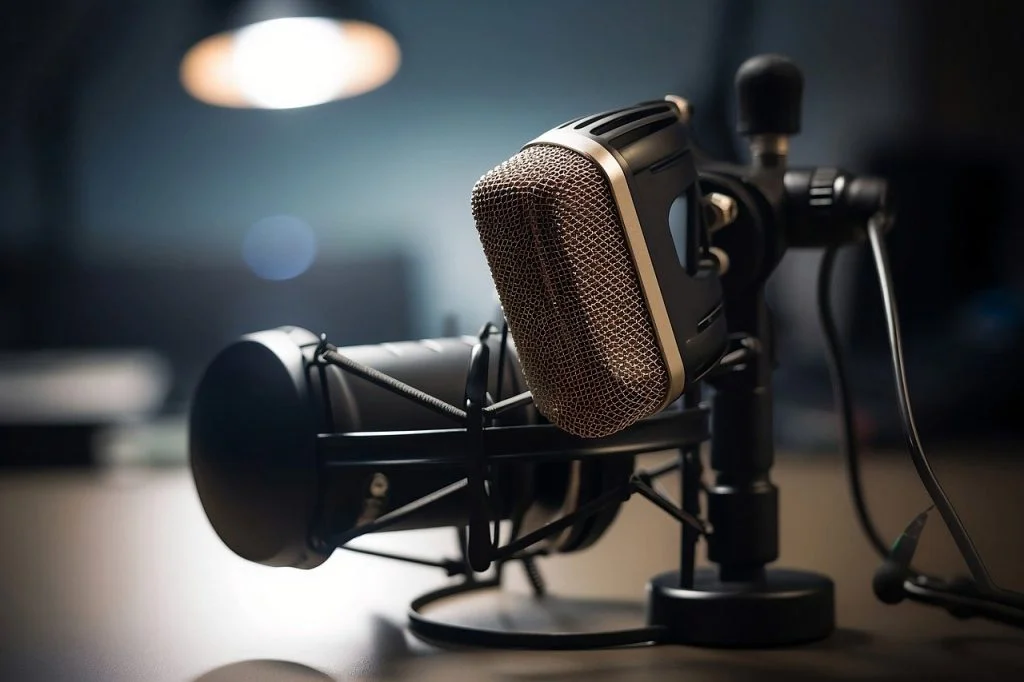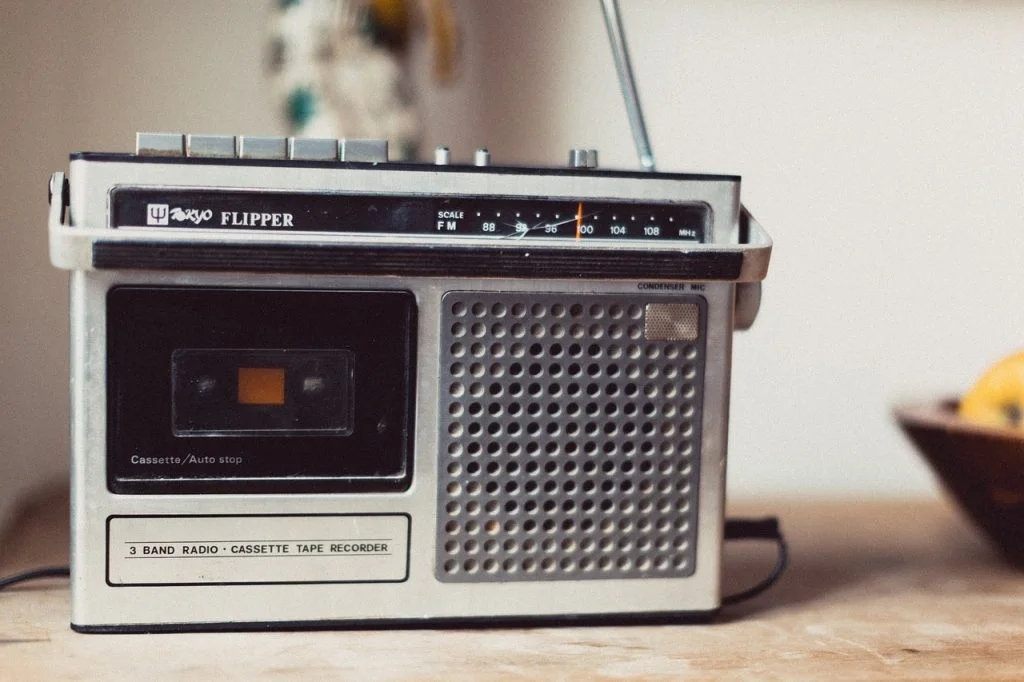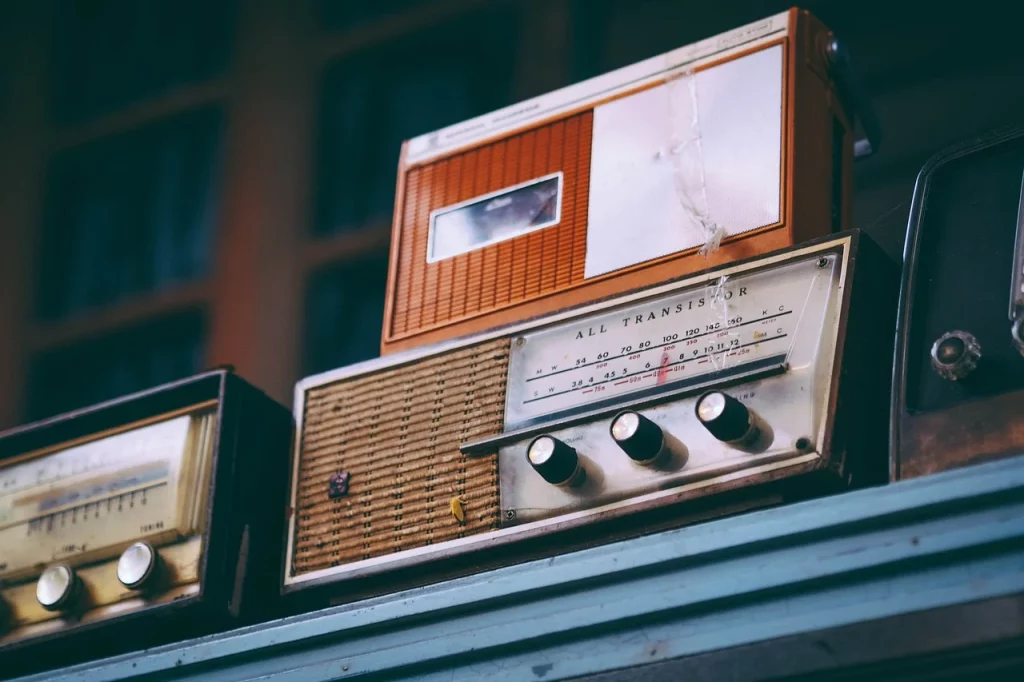Ever tried changing radio stations with wet fingers while munching on a sandwich, only to blast your ears with unexpected static? Yeah, that’s me in my younger years.
Ah, the joys of radio. It’s been with me during awkward first dates and long road trips. After some research, I collected 50 radio facts, and I’m sure you’re going to enjoy them. By the way, do you know what frequency love broadcasts on? (asking for a friend)
Theatre of the mind
Stan Freberg
Radio Facts
Here are the 50 facts I gathered for you. Read thoroughly because, at the end of the page, I prepared a quiz to test your knowledge.
- Radios were first used for military communication in the early 20th century.
- The first commercial broadcast on radio took place on November 2, 1920, by station KDKA in Pittsburgh.
- The Golden Age of Radio spanned the 1920s to the 1940s, when radio was the dominant medium for home entertainment.
- Radio waves travel at the speed of light, approximately 299,792 kilometers per second.
- The FM in FM radio stands for Frequency Modulation, while the AM in AM radio stands for Amplitude Modulation.
- During the 1930s, soap operas got their name because they were primarily sponsored by soap manufacturers.
- Shortwave radio can cover long distances, including international broadcasts, due to the ionosphere’s reflection.
- Electromagnetic radiation encompasses radio waves, which possess wavelengths that are more extended than those of infrared radiation.
- In the 1930s, Edwin Howard Armstrong developed FM radio to tackle the constant static disturbances common with AM radio.
- Marconi is frequently acknowledged as the pioneer of radio, but its evolution was a cumulative effort by numerous inventors.
- The renowned music program Grand Ole Opry, initiated its radio transmissions in 1925, making it one of the most enduring broadcasts ever.
- The Motorola corporation unveiled the inaugural car radio during the 1930s.
- The innovation of transistors in the 1950s substantially transformed radio technology, facilitating the production of more compact and mobile radios.

- Globally, there are over 44,000 radio stations.
- Starting in the latter part of the 1990s and into the 2000s, Internet radio started to flourish, enabling the online streaming of radio broadcasts.
- The unit used to gauge radio frequencies is the hertz (Hz), a term coined in honor of the physicist Heinrich Hertz, who was instrumental in pioneering research in this domain.
- The term “radio” derives from the Latin word “radius”, which means “beam of light” or “spoke of a wheel”.
- HD Radio is a trademarked term for a type of digital broadcast signal that coexists with traditional analog signals.
- The Emergency Alert System (EAS) uses radios to quickly inform the public about emergency situations.
- AM radio is more susceptible to interference, especially at night, than FM radio.
- Ham radio, also known as amateur radio, is a popular hobby where individuals can broadcast on their own stations.
- Nikola Tesla and Guglielmo Marconi had a long-standing rivalry over the invention and development of radio technologies.
- Radio signals can be affected by sunspots, which are magnetic disturbances on the sun.
- The FM broadcast band ranges from 88.0 MHz to 108.0 MHz in most countries.
- The term “drive-time” in radio refers to morning and afternoon commute times when radio listenership is at its peak.
- In the 2000s, satellite radio like SiriusXM became popular, offering commercial-free programming for subscribers.
- During World War II, radios were essential for military communication and public information.
- Crystal radios, which need no external power source, were popular DIY kits for kids in the early 20th century.
- The Radio Corporation of America (RCA) was a major American electronics company in the 20th century.

- Podcasting, a term derived from “iPod” and “broadcast”, is a digital evolution of traditional radio.
- In many parts of the world, radio remains a vital source of news and information for people without access to other media.
- Radios have been used in a variety of space missions, including communicating with distant spacecraft.
- Many early radios used vacuum tubes, which were later replaced by transistors in most applications.
- AM radio signals can often travel further than FM signals because they are reflected by the Earth’s ionosphere.
- The world’s smallest radio receiver was created using a single nanotube in the early 21st century.
- Walkie-talkies are two-way radios that allow for direct communication between devices.
- The first regular news broadcasts on radio began in the early 1920s.
- Many famous musicians, including Elvis Presley, got their big breaks from radio airplay.
- The introduction of television in the 1950s marked the decline of radio’s dominance in home entertainment.
- FM radio signals are typically clearer and more resistant to interference due to their method of frequency modulation.

- Radios can operate on a variety of power sources, including batteries, mains power, and even solar energy.
- Radio dramas were a popular form of entertainment before the rise of television, with shows like “War of the Worlds” causing public panic.
- Many radio stations have a specific format, such as talk, news, or specific genres of music.
- Radio has played a major role in public education, especially in countries with widespread illiteracy.
- Radio waves can interfere with certain medical devices, such as pacemakers.
- Radio is often used during disasters for communication when other means fail.
- Community radio stations serve local audiences and often focus on local news, events, and concerns.
- The telegraph, which predates the radio, was a significant influence on the development of early radio technology.
- Radios have been incorporated into a variety of devices, from clocks to smart speakers, in the 21st century.
- RDS (Radio Data System) allows FM stations to send additional information, like song titles, along with their broadcasts.
Radio Myths

Do radios emit harmful radiation? A classic question/myth that goes around for years. Let’s see the answer to this and four more myths.
- Radios Emit Harmful Radiation.
While radios do emit electromagnetic radiation, it’s non-ionizing and typically at levels far too low to cause harm. Everyday electronics like cell phones and microwaves also emit similar types of radiation. Proper use and adherence to safety standards ensure that these devices are safe for regular use. - Older Radios Sound Better Due to “Tube Warmth”.
Some audiophiles swear by the warm sound of vintage tube radios. While it’s true that tubes can produce a unique sound signature, whether they sound “better” is subjective. Modern radios can reproduce sound with more accuracy and clarity. - AM Radio is Inferior to FM Radio.
AM (Amplitude Modulation) and FM (Frequency Modulation) are just different methods of transmitting sound. While FM generally has better sound quality for music due to a wider frequency range, AM can travel longer distances, especially at night. Each has its own strengths and uses. - Radios are Becoming Obsolete.
Radios remain a vital tool for communication, especially in emergency situations where other networks might be down. They’re also still popular for entertainment, news, and sports broadcasts in many parts of the world. - Digital Radio is Always Better than Analog.
While digital radio offers clear sound quality and can transmit additional data, it might not always be superior. In fringe reception areas, an analog signal may fade into static, but a digital signal can cut out entirely. Both formats have their advantages, depending on the situation.
No products found.
Radio FAQ

Is radio dying? This is the first thing I found when I searched for questions online. Modern-day technology has changed many things, for sure. Let’s see the answer to some of the most asked questions about radios.
- When did FM radio start?
FM radio kicked off with Edwin Howard Armstrong’s invention in the 1930s. The first official FM station? 1937! - Is radio dying?
Nope! Digital platforms might be booming, but radio’s local charm and immediacy keep it alive and kicking. - How does radio work?
Think of it like this: a transmitter sends invisible “music-filled” waves through the air. Your radio catches and plays them. Magic, almost! - AM vs FM radio: What’s the deal?
AM tweaks wave height, FM adjusts wave spacing. FM’s clearer, but AM travels farther. - Are radio waves harmful?
Not really. They’re non-ionizing, so they’re way gentler than X-rays or UV rays. Still, don’t hug transmitters!
Radio Quotes

I’m too young to be able to hear most of these quotes live, but I had a great time researching them. Here is my list.
Theatre of the mind.
Stan Freberg
This is my favorite one (as you can see, I used it twice in this article). Stan Freberg correctly address the fact that it’s all about the imagination of the listener.
Radio is the theater of the imagination; television is the theater of the mindless.
Steve Allen
A famous quote by Steve Allen. It clearly shows the contrast between the depth of radio and the passive nature of TV.
Radio is the most intimate and socially personal medium in the world.
Harry von Zell
Quote by Harry von Zell. Emphasizes radio’s unique power to create personal connections. It’s an intimate companion, binding listeners together.
I wouldn’t give a nickel for the simplicity on this side of complexity, but I would give my life for the simplicity on the other side of complexity.
Oliver Wendell Holmes, Jr
Yes, I am sure you read it twice to understand it. Oliver Wendell Holmes, Jr highlights the deceptive simplicity of radio. Behind broadcasts lies a world of intricate artistry and technology.
A microphone is a microscope.
Baird Searles
Baird Searles suggests that microphones, like microscopes, magnify and intensify details. It brings voices and sounds into sharp focus.
No products found.
Trivia About Radio

Welcome to the radio quiz! Get none of the questions right, and your car radio might only play ads for the next week!
Conclusion
And with all this, my radio research has concluded. I hope you keep this knowledge, and who knows, maybe you will become the life of the party when a discussion about radios pops up. Either way, knowledge is power, right?
Before we sign off, a quick question for you: If you could have your own radio show for a day, what would its name be? Drop it in the comments below, and let’s have a laugh!


